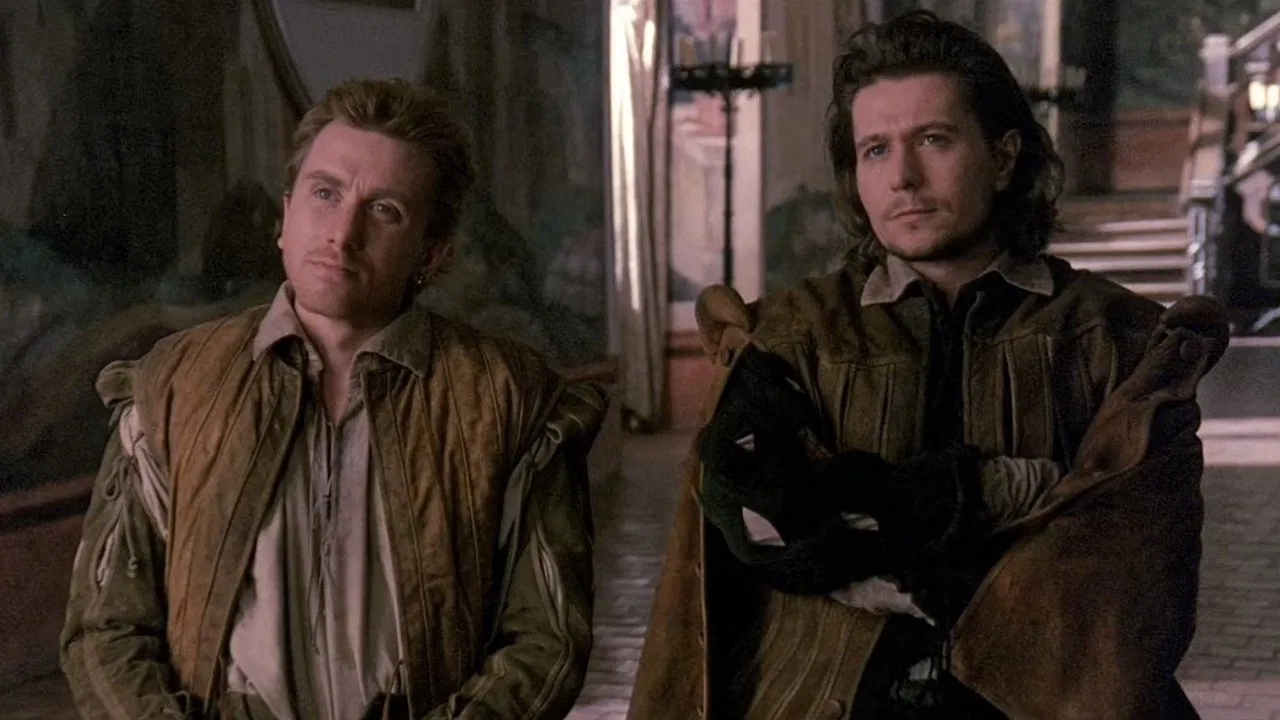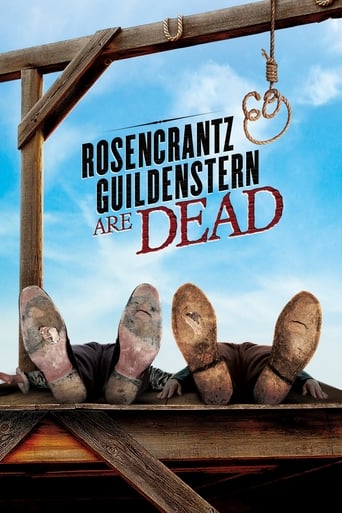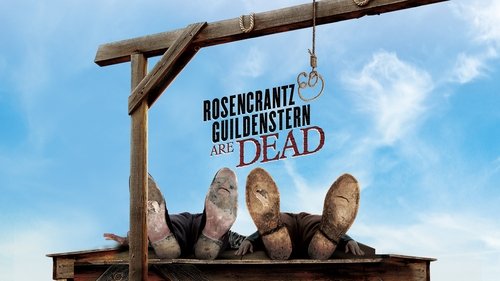


Written and directed by Tom Stoppard, and just possibly a tad too much of both. A bit brilliant but long. If you don't know your Shakespeare, you'll be as much at a loss as R & G. If you know him and his Hamlet, you'll find stuff to intrigue you. But why is it G, or is it R, almost eurekas Archimedes principle, discovers gravity, the equal and opposite reaction, the conservation of energy, mechanical dynamics, invents the steam engine and the biplane? What has this to do with Hamlet, or anything else ? Fantastic settings, lovely costumes. A bit like Bergman's Magician. Great acting. But life gets tedious, don't it? Even when there's a puppet play within a play within a play within a play. Almost overkill. A lot of ins and a lot of outs, but not quite as funny as TBL. Johnson thought Shakespeare's wordplay went on a bit; maybe the same applies here. Tom's a mind to amaze, but he was only learning film direction. Death is a ship, that's true enough. This may not be helpful, but why should a film review be helpful ?
... View More"Rosencrantz & Guildenstern Are Dead" has a unique record in that it's actually the most critically acclaimed movie that Roger Ebert gave zero stars to. It has a 64% on RottenTomatoes (which admittedly isn't that high) but a 7.6 here so it's easily the best one he ever thought was one of the worst movies ever. The weird thing is that in this review he honestly doesn't go into much detail on why it's so horrible. He just says it isn't meant to be a movie and better off as a play. Well, I guess that makes sense, but really zero stars? While not a masterpiece, I ended up enjoying it.This wasn't directly based on a play by William Shakespeare, but actually based on a play based on "Hamlet". The conversations in this movie are very nice and really do get philosophical. Oh, and they do die at the end. There's nothing wrong with these characters at all, especially with how they end up meeting the same fate as the other main characters showing how well they are connected. The backgrounds and sets look very nice and I like how an actual play is part of the story, sort of doing a satire on the very play they're performing in real life. Have to disagree with Ebert, this film is fine. ***
... View MoreRosencrantz (Gary Oldman) and Guildenstern (Tim Roth) are two minor characters in William Shakespeare's play Hamlet. Here they are the main characters. Rosencrantz flips coins which constantly comes up heads and Guildenstern assumes a problem with reality. They come upon a traveling troupe of actors led by (Richard Dreyfuss). Rosencrantz and Guildenstern suddenly find themselves in the castle at Elsinore and they encounter the characters from the Hamlet play.As a comedy, the jokes are wordy and eventually wears thin. There is a fascination with taking the two side characters and watching the play from slightly off center stage. The verbal tennis game is fun at first. One must also be familiar with Hamlet. This is a fascinating concept but it does not really work as a movie.
... View MoreIt was a brilliant idea: to give two minor characters from Shakespeare's 'Hamlet' a life independent of the play, but Tom Stoppard's debut as a film director presents a near-textbook example of how not to adapt a work of theatre for the screen. Whatever virtues the film may have are entirely those of Stoppard's original stage comedy, up to and including the topsy-turvy wordplay, at times reminiscent of the old Abbott and Costello 'who's on first' routine. A passing familiarity with Shakespeare may be required to fully appreciate the joke, but in the end it's a moot point: camera tricks aside, Stoppard does nothing to translate his material to the visual grammar of film, so what might have sounded clever on stage comes across as stilted and pretentious on screen. Worse yet, his Hamlet isn't staged as a play, which seems to defeat the premise, and the film is further crippled by some unfortunate miscasting: Richard Dreyfuss is all wrong for the supposedly ominous Master of Players, and Iain Glen's Prince of Denmark compares unfavorably (believe it or not) to Mel Gibson's recent attempt at the same role.
... View More